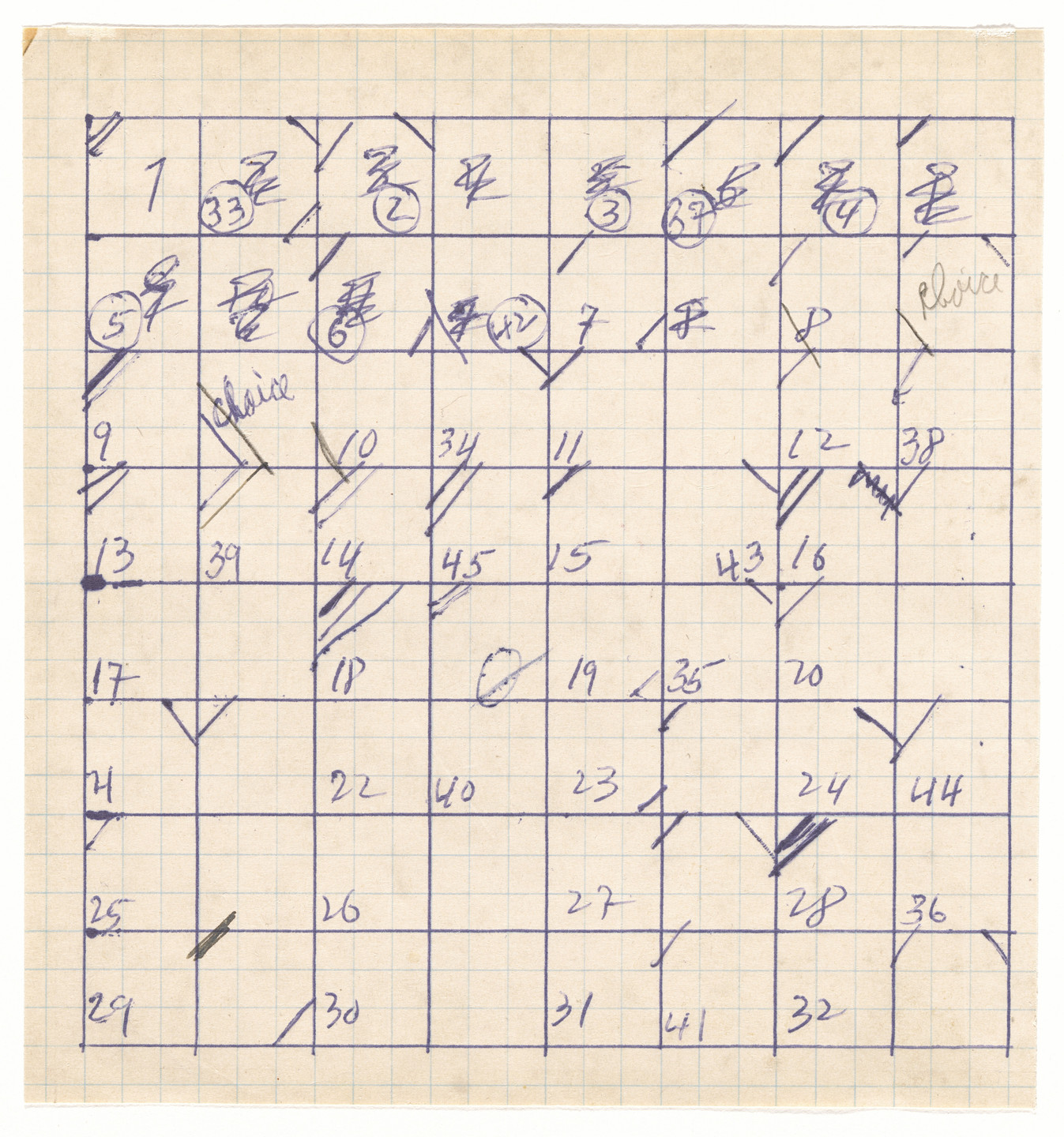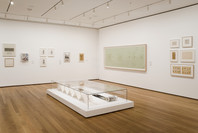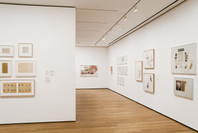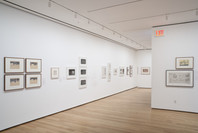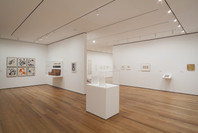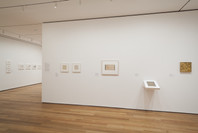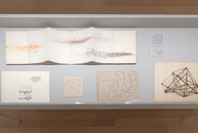Closely associated with the composer John Cage since the late 1930s, Cunningham established his own dance company in 1953 to explore ways to apply to choreography the same kinds of processes of chance that Cage was applying to music. By using chance operations Cunningham intended to encourage a play of possibilities beyond the range of his own choreographic imagination and memory. As part of his work he made charts like this one for every element of the performance, including movements, durations, and directions in space. Suite by Chance, one of the best–known of his early works, was first performed at a private studio performance in New York City in 1952.
Gallery label from 2007.
This page is from Cunningham’s dance Suite by Chance, created the same year as the premiere of Cage’s 4’33”. Lifelong collaborators in art and life, Cage and Cunningham frequently allowed their respective music and dance compositions to intersect.
In the early 1950s, Cunningham was inspired by Cage to add an element of unpredictability to his work by following chance operations, such as the flipping of a coin, to choreograph the body’s movements. Cunningham noted, “Suite by Chance is exactly what the title says. . . . In applying chance to space I saw the possibility of multidirection. Rather than thinking in one direction, i.e. to the audience in a proscenium frame, direction could be four–sided and up and down.” Christian Wolff—credited for introducing Cage to Zen Buddhism—composed a score for magnetic tape to accompany Suite by Chance, making it an early dance piece incorporating electronic music.
Gallery label from There Will Never Be Silence: Scoring John Cage’s 4’33”, October 12, 2013–June 22, 2014.
